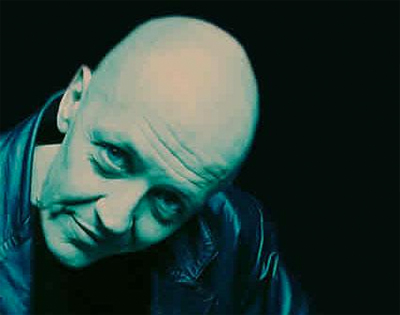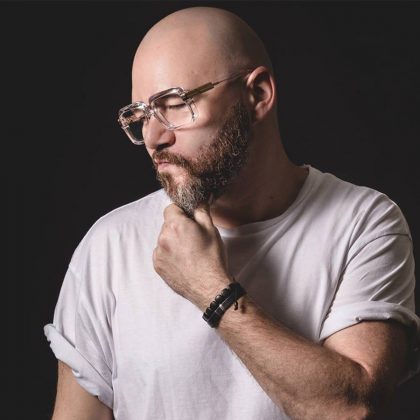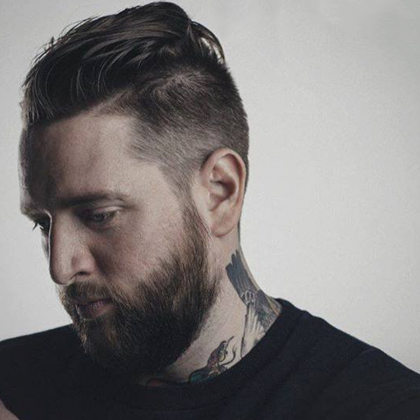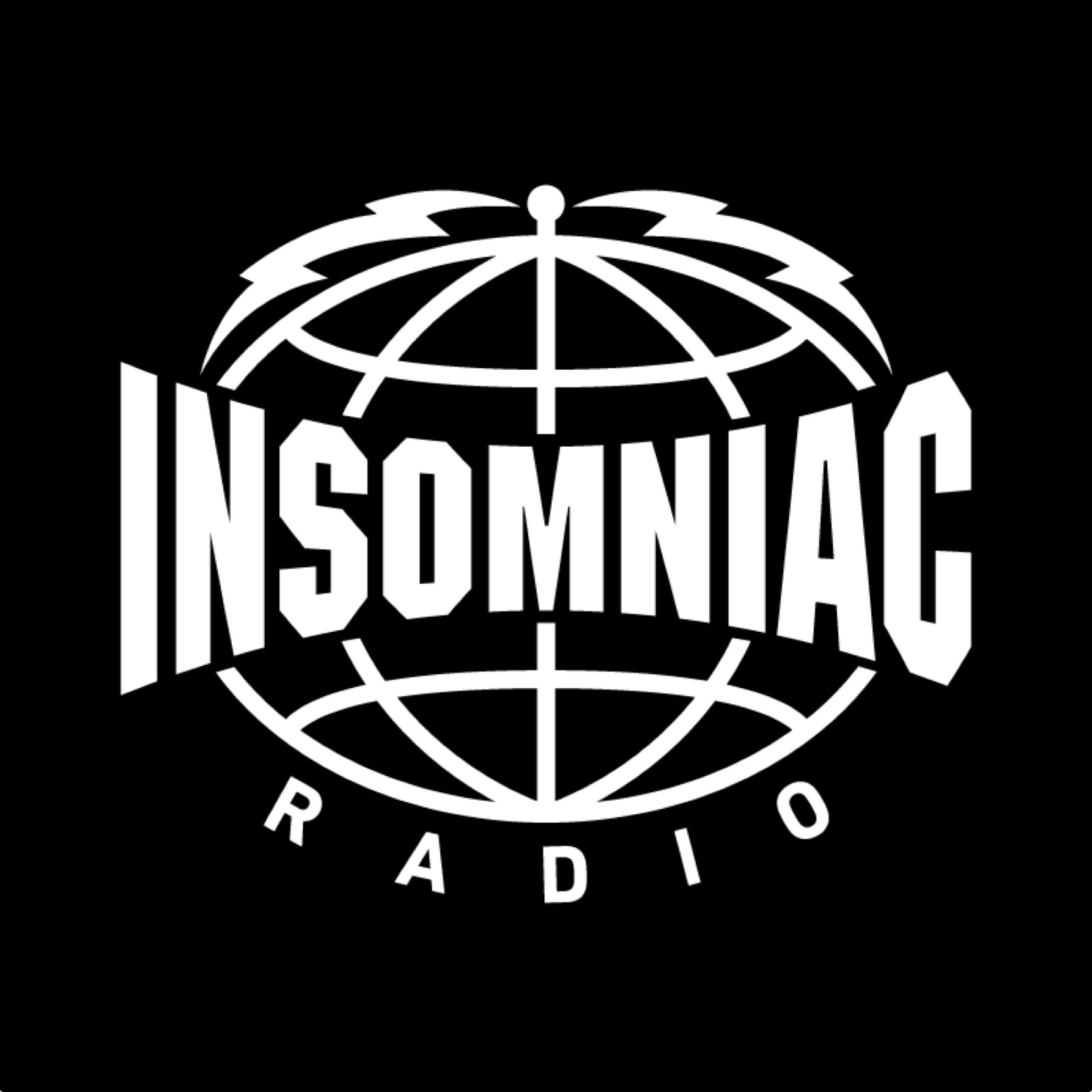Rave On: Author Luke Bainbridge and the UK Acid House Explosion
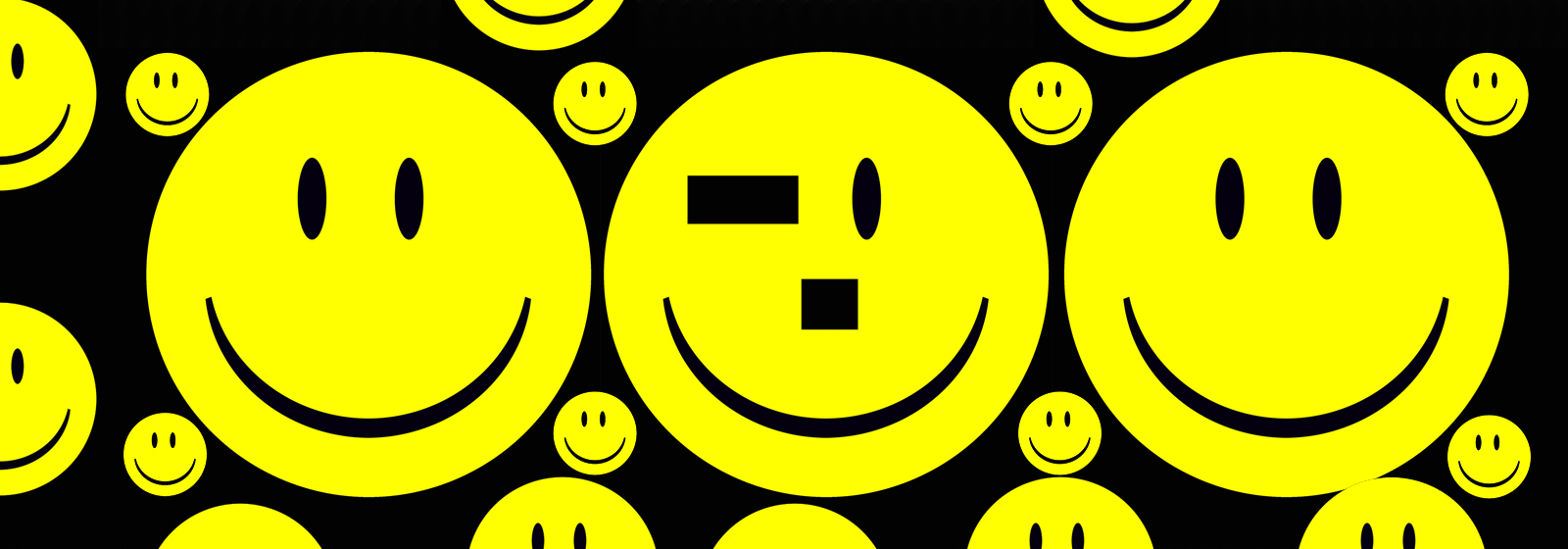
The story of electronic dance music is wildly complex, and in the United States, it’s mostly unknown to the public. Of late, with the passing of Frankie Knuckles, the “godfather of house music,” some quarters are finally waking up to its rich history. As they dig, they will find EDM’s roots go as far back as blues and jazz, by way of disco and the Stonewall riots, mixed with massive technological changes that continue to transform how we all think and live today.
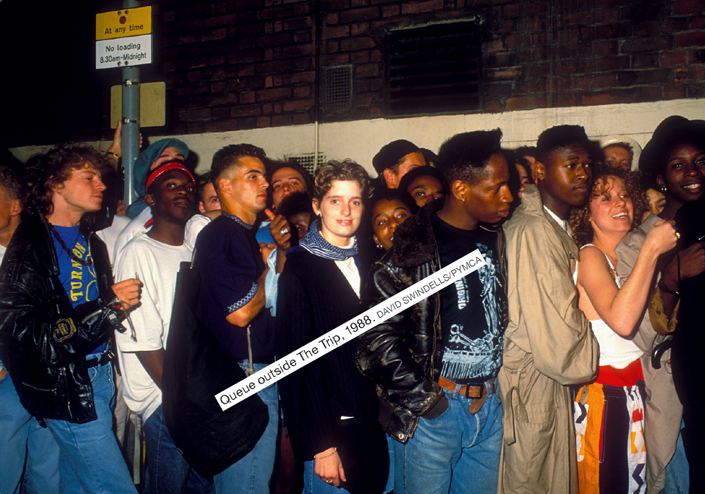
Luke Bainbridge’s excellent new book, Acid House: The True Story—out now on Omnibus Press—is a riveting account, 25 years on, of the UK’s own “Summer of Love,” from the people who were intimately involved: Paul Oakenfold, Peter Hook, Danny Rampling, Mark Moore, Sasha, Carl Cox, Andrew Weatherall, Mike Pickering, Irvine Welsh, Boy George, Greg Wilson, Martin Fry, Fiona Allen, Ken Tappenden, and many others. As a collection of interlinked, firsthand memories and anecdotes, the various passages of Acid House have an immediacy and grit that keep the pages turning.
While it’s primarily focused on the UK story, all fans of EDM will find Acid House fascinating. Many of the stories in the book are amusing, including how Sasha got his big break. Others are more sobering, like the violence that eventually took over New Order’s famous Manchester dance club, the Hacienda.
We talked with Luke about his book’s fun approach and its core themes, and why two decades later, Britain is still trying to make sense of what he sees as the “last youth culture revolution”—a social wave that changed fashion, music, design and the law. Excerpts of his book follow this interview, and you can order a copy on ebook or paperback here.
“Every generation likes to think that whatever they are experiencing is more important than their parents’ generation.”

Every generation likes to think that whatever they are experiencing is more important than their parents’ generation. Obviously, we felt we were different, but I think it needed a certain passage of time to really get distance and reflect on it and realize, “You know what, it was really important! It truly was.” I do believe it was the last true youth revolution, certainly in the UK, because the world’s changed since then. It was more important than punk because it was more egalitarian. Punk in Britain, in its essence, was just a few people in London. Acid house was totally egalitarian, and quite quickly, it spread to small towns, too. It really revolutionized the country.
One thing I got from the book was how long it took for acid house to get going on some level, or how long it took certain DJs playing it, out on a limb, like Jazzy M, Mike Pickering and Mark Moore. It took a while to register with folks. It took a couple years for it to come together. But when it did happen, it spread like wildfire.
I think what happened is when it took off, it was a perfect storm: a new drug and a new music. Those records are amazing, and many of them still stand up, but no one can underestimate the influence of ecstasy in the UK story. That really made everything make sense fast. Acid house took off in 1988 in England. Even before that, you had hits on the charts, but it hadn’t yet made sense as a thing.
Of the people you interviewed who were into the music before ecstasy came onto the scene and made everything explode, what was their perspective on things generally? One thing you write about a lot is how big the rare groove scene was in London at the time; there was a lot of resistance to acid house and electronic music from that crowd.
That was the difference between London and Manchester, really. There was a really huge rare groove scene in London, and there was this weird resistance in a way because basically, London already had a set scene. House was also seen as gay music in parts of London for a long while, which was how it was seen in parts of America as well.
One song that I thought was interesting—that people don’t talk about as much anymore but that was huge and actually broke into the zeitgeist in the US for a while, getting lots of support on MTV, for example, and a movie named after it—was 1987’s “Pump Up the Volume” by M/A/R/R/S. What was the importance of those early hits in seeding the groundwork a little bit?
The importance of records like that was it just made it seem like this is a new music. It’s not just cut and paste. We’re not just mixing records. It actually is a new music; it’s a new way of making music. It was a really important time in music because for once, it did feel like, “We’re wiping the slate clean and starting again.” I don’t think that’s happened since.

Yes and no. Possibly that’s more true in America than in Britain, because it was quite lo-fi when it happened over here in the beginning. It’s weird to think that we managed to get ten thousand people into a field dancing to music before the internet, before mobile phones. It was different than what is happening right now, where it is totally driven by the new technology and social sharing. It was bizarre. I think what’s quite weird is the people that engineered those original raves, they would have killed to have had the internet. They would have killed to have mobile phones. It would have made their lives so much easier. But now that we got those tools, it doesn’t happen with the same energy.
There’s no gestation period anymore, and that’s what you need for a scene to develop. Everything’s so immediate nowadays. Everyone wants to know everything immediately. It’s hard to explain to younger people now, but you couldn’t hear those records on the radio; you couldn’t hear them on the internet. If you wanted to hear that music, you had to go to those clubs. If you wanted to know what Shoom was, if you wanted to know what the Hacienda was like, you had to go to clubs. You couldn’t look it up on YouTube. You had to experience it.
One crew you went to quite a bit of depth on in the book was the Boy’s Own crowd, who produced the London scene’s first zine: Terry Farley, Andrew Weatherall and others. Why were they so important to the development of the rave scene?
They were the first people to actually document what was going on. Nowadays, the English newspapers are full of music coverage and stuff, but they weren’t back then. There was no one else covering it. So Boy’s Own were right there right on the bubble. That’s why they were important. Andrew Weatherall and Terry Farley were key figureheads in the scene. They made it more of a scene because they documented it.
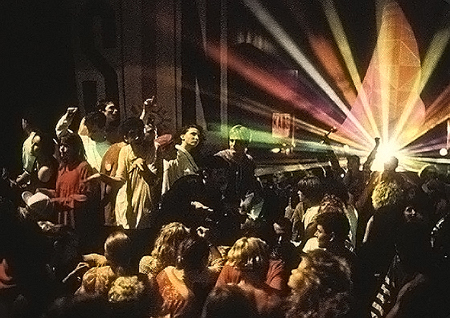
These people are getting forgotten about. Cymon was really important. He was one of those people that crystallized things and made things happen. In the acid house era, those who could actually make things happen and had a vision were as important as the DJs and musicians.
The outdoor scene, when that began—which he sort of kickstarted with the other Boy’s Own members—that sort of pushed things out into the suburbs and beyond. Did that attraction of more people become huge because it was pulling in more people from outside the city and because of the open space?
What made it more widespread was, when you first heard acid house and were on ecstasy, you felt like you had scored the best secret ever, and you wanted to share that with someone else. That’s why it exploded. It didn’t matter if you were the first person at Shoom or you lived in the suburbs or wherever; everyone had their own epiphany, and everyone’s epiphany was just as important as everyone else’s.
For a lot of people in the US, they don’t know Manchester as well as London. The “Madchester” scene certainly had an impact with the Stone Roses and so on. And these days, Factory, New Order and especially Joy Division are everywhere. I can’t tell you how many kids I see wearing the frequency lines of Unknown Pleasures on T-shirts, or some interpretation of it. How would you describe why it was important?
It’s weird because everyone thinks that the “Madchester” tag that all people played in Manchester at that time was Manchester music, but those records that exploded in the Hacienda were from Chicago and Detroit. One of my favorite interviews in the book was Mike Pickering, one of the main DJs at the Hacienda, telling me a story of when a Canadian TV crew came over to him and asked, “You play for five hours each night at the Hacienda; is there enough music from Manchester to play five hours of music?” And he just went, “What!? Manchester? Most music I play is from Chicago and Detroit.” Manchester really was that, the zeitgeist, it just captured everything.
One story I thought was very funny was Sasha, who is pretty well known in the States because of his success and helping break progressive techno to an American audience. The story about Jon DaSilva was hilarious: He had an opportunity to fill in for Jon, who was his mentor, sort of, and played every anthem he had in one set; and it put him on the map in a big way. That shows just how quickly things happened back then—not how chaotic, but how dynamic it was.
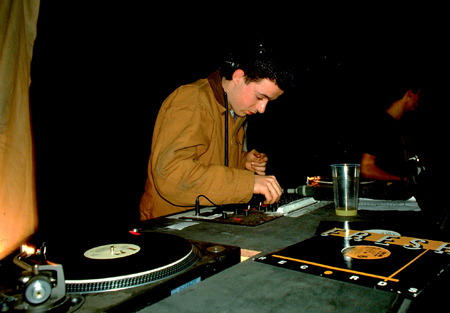
Was it really the last youth culture revolution, as you argue—at least in the UK, and probably elsewhere? We’re now in this age of the internet and immediacy, but there’s a lot of nostalgia and younger folks wishing they had been there. There was a story on Vice where a journalist read YouTube comments of classic rave anthems and was sincerely touched by what he read. Do you think there’s a possibility that if enough young people push against this reality TV world we now live in, that something like the acid house revolution could happen again?
I don’t want to come across as the old man saying it was better in the old days. It is happening. There’s brilliant stuff happening, but it happens in pockets now. I can’t see a massive widespread thing happening again in the same way. There’s amazing raves and music in pockets. If you want to discover that, there’s amazing things happening in London, Los Angeles and New York.
I wanted to ask you a bit about the global picture. England is an island, and it’s like a pressure cooker—so that when things happen, it’s so intense. Even with rock, the British Invasion was a similar thing; it had that intensity. Things go big in New York and some cities in the US, but England is this very important relay station for youth culture. That said, what role did America play?
I think until recently, the history of pop music is about the relationship between America and Britain. It’s about what you send us, we reappropriate that and send it back. While the Rolling Stones are the biggest band in the world, it’s basically ripping off American R&B and blues. Acid house was also reappropriating your music. So until very recently, it was about the intimate relationship between Britain and America. Acid house is that, totally. That music was born in Chicago and Detroit. We took it, made it our own, and finally—no disrespect—20 years later, you’re now discovering it.
Rave in the US was much more underground because we could never break through to what happened in England, which happened so fast. Here it was happening more in the big cities, but then the authorities could just shut it down. There were still so many people who were unaware or didn’t care or were into country music, or whatever. It took America a while. So what is that like to watch from your end, for it to break in the popular mainstream here?
It’s slightly bizarre. This music was always popular in Chicago and New York and L.A., but in America for a long time, I think it was seen as too black and too gay. That’s why it didn’t take off for so long. It was just too black and too gay. And now, just to see how those residencies in Las Vegas used to be Dolly Parton and Elton John, how now they go to Avicii and Paul Oakenfold. It’s bizarre. You go out a bit in New York, and it’s house music. It’s now the common music. It’s brilliant.
But I think the whole “EDM” thing, England has quite a difficult relationship with it. It’s so popular here. It’s huge, as it is everywhere. But people of a certain vintage—i.e., myself—just feel it’s not necessarily true to where this music came from. Hopefully these new fans who come into this music—if they come into it through Swedish House Mafia or David Guetta—hopefully, some of them will look back where this music came from.
It’s a fascinating history, and your book is a great place to start. I hope, too, as new fans of this music find their compass, that they will dig deeper for the roots. For that crowd, can you sum up then why you personally wrote the book?
We all forget how young pop music is. It’s only 60 years old. It’s only since the 1950s since this whole thing started. And acid house has been the dominant sound in much of the world for the last 25 years, for almost half of the history of pop music. So with that distance and time, I just figured it was really important to figure out where this came from and why it happened the way it did. I think it is—I’m biased—more important than punk, for example. For me, it’s the last true youth revolution. It changed everything. Acid house has influenced every area of society.
All photos above by: David Swindells
READ BELOW FOR EXCERPTS FROM LUKE BAINBRIDGE’S ACID HOUSE: THE TRUE STORY

On the roots of the UK rave movement, from New York’s legendary Paradise Garage club and American dance records, to Ibiza and club Amnesia:
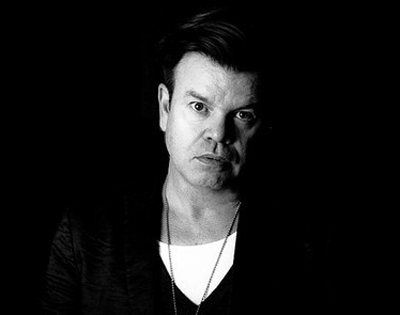
Wanted: Ian St Paul and myself want to go to New York for a holiday because that was the source of the music for us. We were out there for three months and went to most of the great clubs of the time, but I’d have to say Paradise Garage was the most inspiring—it really moved the dial for anyone who ever went there. It was like nothing any of us had seen before.
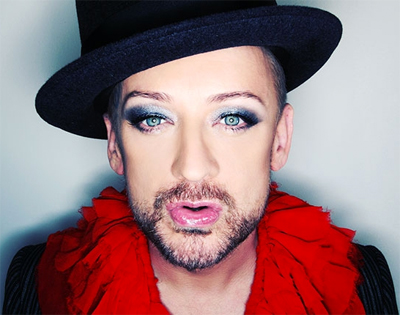
That was the beginning for me, hearing that music at Paradise Garage and seeing people dance in a different way. I then got to meet Larry Levan and got quite friendly with him, but it was a little while later before I really got into the music.

Amnesia was a complete revelation. Alfredo, as a DJ, blended texture and music in a way I would compare to a Miro painting. For me, he was the Larry Levan [legendary DJ from the Paradise Garage in New York in the late Seventies] of Europe. Interestingly, Alfredo was connected to an American who was part of the Paradise Garage group, who used to supply him with records. Dancing in the open air, surrounded by an incredible mix of sexy people, was mind-blowing.

On the London acid house explosion in 1988 and Danny Rampling’s influential underground club Shoom:
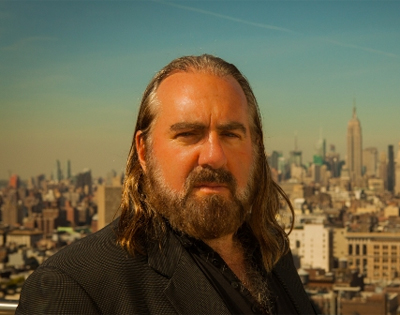
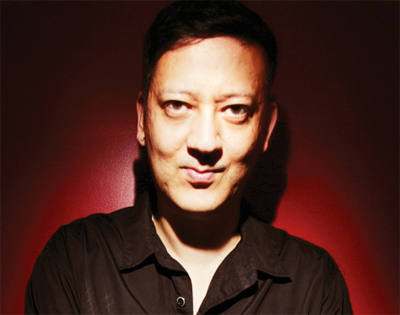
If you asked me to pinpoint it, I’d put the explosion at March 1988 probably. That’s when it really took off. Big time. As Sheryl Grarrett said, once that happened, all the West End trendies who had been the ‘in crowd’ suddenly looked like dinosaurs.
CYMON ECKELS (BOY’S OWN CO-FOUNDER): I was a carpenter and I cut my fingers off in an accident on 5 May, 1988, so I had to disappear off the scene. Four weeks later I came out of hospital and acid house was in the papers: it happened that quick. You’re talking about a trajectory of about 12-16 weeks from being nothing, from being something only a handful of people knew about, to being on the front page of The Sun. Then it had gone overground and I think we felt the honeymoon period was over. We weren’t trying to protect the emotion or the idea of acid house; we were just trying to protect the great parties for great people.
When you think about it, you talk about word of mouth and you look at books that try and take an analytical view like the American contemporary philosopher Malcolm Gladwell’s Tipping Point. To go, in those short weeks, from an obscure club to a place where Boy George, Fat Tony, Patrick Cox, everyone who worked at Vivienne Westwood—everything and everyone we were genuinely against, well we were against Fat Tony and Boy George at the time—were all clamoring to get in. How the fuck did that happen? Even if you had all the money in the world, you couldn’t build a brand to do that today.
On Manchester’s acid house love affair and Factory Records’ legendary Hacienda club, one of New Order’s most important gifts to world culture:
KARL BROCKBANK (HACIENDA REGULAR): When you walked up to The Hac, you could hear and feel the old doors vibrating and actually see the steam coming out from under the door. You just couldn’t wait to get in there. Then when you walked in, there were these big plastic curtains and as you walked through them it would absolutely smack you right between the eyes. It was just electric man, electric. Absolutely. Greatest place in the world ever. It really was.
At the end of every night everybody used to say, “Where we going? Where’s the party?” I was followed home when I was in a taxi sometimes because people thought I was going to a rave, and I had to get out of the car and explain to people, “No, I’m going home, mate.”
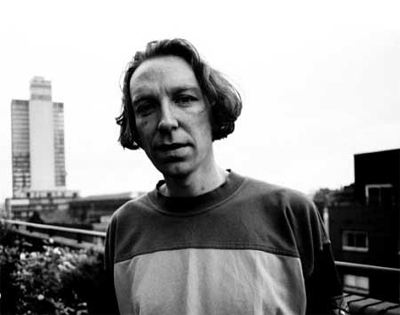
BILLY CALDWELL (HACIENDA REGULAR AND LATER DJ): My grandma lived on The Crescents when I was growing up, so I knew them well. All of us who went to The Hacienda then started going back to The Kitchen. I ended up going on Wednesdays, Thursday, Friday and Saturday night. It’s still the best after-party ever for me. It was like a Who’s Who of Manchester’s music scene. Tomlin and Chris Jam were playing all these great house records but they would throw all these curveballs in there like Roachford’s ‘Cuddly Toy’—that was a big Kitchen tune. Then you’d go upstairs where they’d knocked through a wall to create a studio and any night there could be Bernard Sumner, Peter Hook, Shaun Ryder, Chris Goodwin and any number of Manc musicians, and they’d all be picking up instruments and just jamming with each other. It was just an amazing creative place and it was so inspiring to be around that sort of energy.
DARREN PARTINGTON (808 STATE MEMBER): I didn’t like it when it was badged the second Summer of Love, and associated with Woodstock and hippies and all that—I hated that. For me it had fuck all to do with hippies. Me, Andy and Eric spending Saturday afternoon sweeping out a fucking industrial warehouse in the city centre and then installing a generator so we can have a huge party and have it right off that night—what the fuck has that got to do with middle-class hippies? Fuck the hippies—they had nothing on acid house.
On Sasha’s big break and the forging of his searing progressive sound, which would help win over many Americans years later when he partnered with John Digweed for their Northern Exposure series:
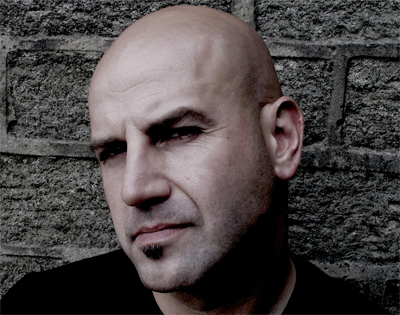
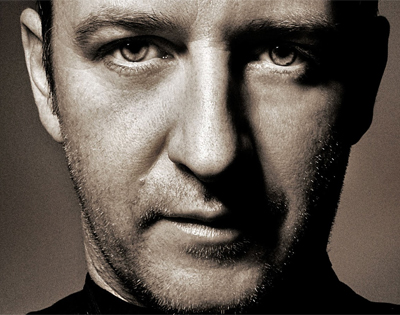
On the comedown and legacy of the acid house wave, from the Hacienda’s implosion to rave’s lasting impact on society:

ANDREW BARKER (808 STATE MEMBER): 808 State did a track with Bjork so she spent a bit of time hanging out with us in Manchester while we were recording. We were in the Most Excellent that night when Salford ram-raided the door, which was mental…trying to drive a car through the doors of the club! I was sat inside with Bjork and she couldn’t believe it. She was like, “This city, Manchester, is crazy!”
DAVE HASLAM (JOURNALIST AND HACIENDA DJ): Breaking down social and musical barriers was an important part of what was achieved. In the late Eighties, courtesy of Thatcher, communities had been fragmented, ghettoized, marginalized; but on the Hacienda dance floor those divisions, that horrible selfishness, seemed to melt away. The best music revolutions have always been about synthesis—that’s been the case ever since the birth of rock ‘n’ roll; Elvis bringing together white country music and black rhythm & blues. We had that synthesis: influences, people, coming together.
